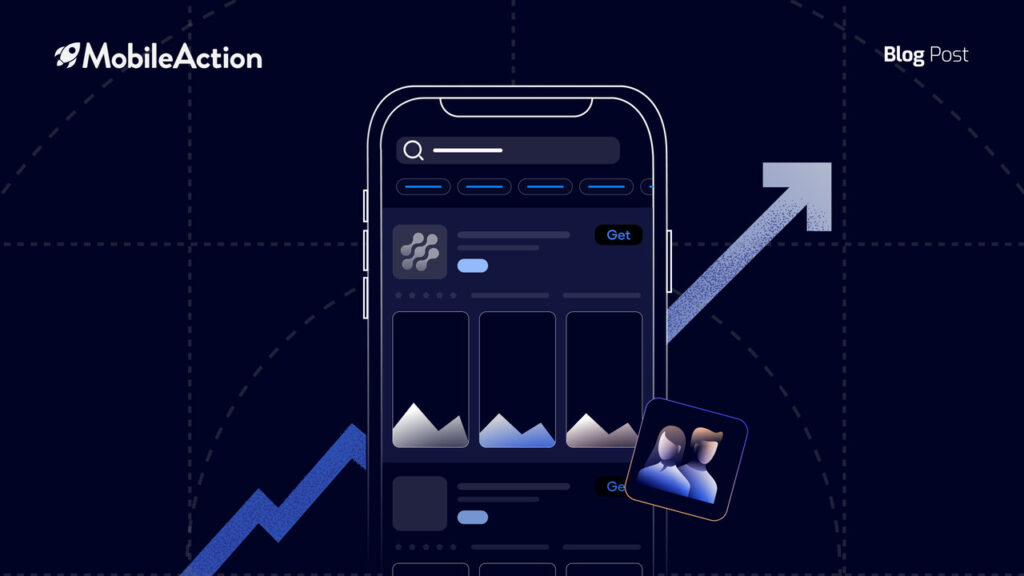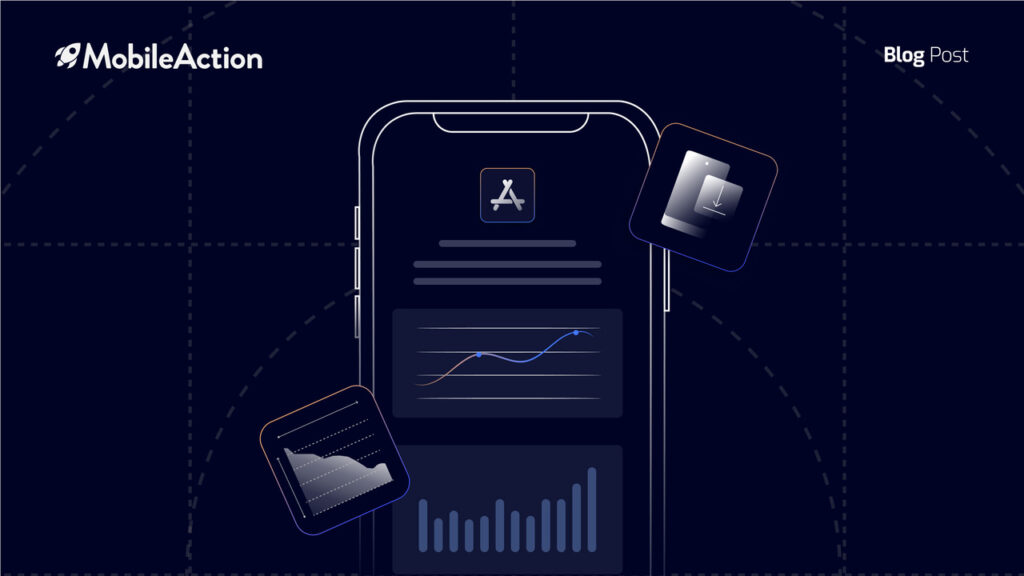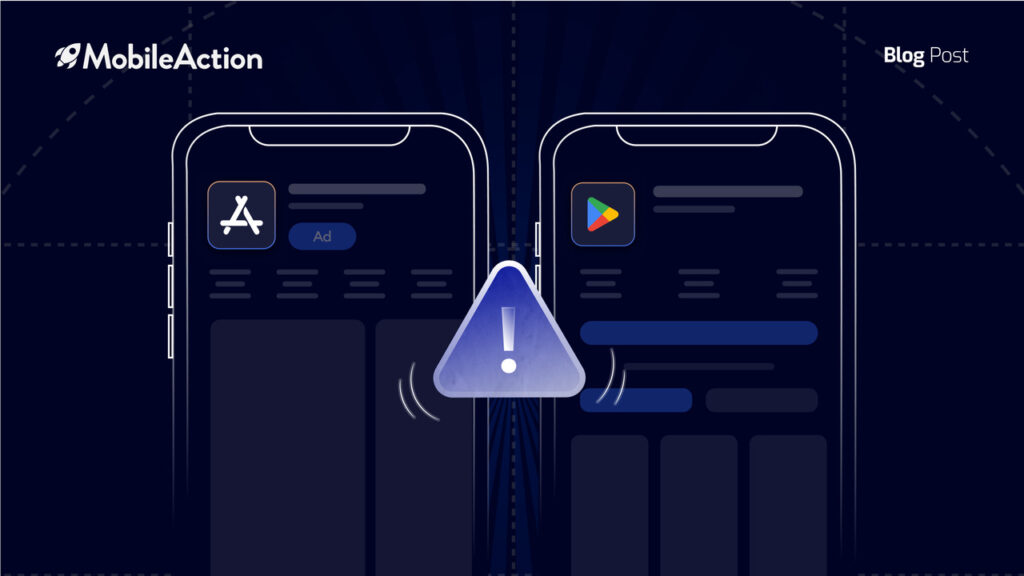We all know that ASO can also be referred to as app store SEO. Therefore, we have some idea of how these two aspects of marketing are similar. Now, what is the true relationship between ASO and SEO and how should we be using this to better market our app? For a full-blown dive into the differences between ASO and SEO, you can check out our post on ASO and SEO: Why They are Totally Different Animals
Let’s see how using these two techniques in tandem can help an app get more visibility and acquire new users.
Headspace’s use of SEO
Headspace utilizes SEO marketing. What is SEO marketing? SEO stands for “search engine optimization”. This is the process of optimizing your site to increase its visibility for relevant searches. This has a direct effect on your search results. How do web search results affect your app’s growth? Let’s take a look. Headspace, a meditation app, does a great job of this with their blog and Netflix series.
Let’s start with SEMrush to see if the search results for the word “headspace” are coming out with keywords mostly related to the brand or otherwise.
How the relationship between ASO and SEO is helpful to Headspace
One key difference between ASO and SEO is their platforms. You will go to Google to look up how to do something. You will search for an app that Google has suggested. People turn to the app store once they have a general idea of what their problem is already, and how they want to solve it.
For example, you might google, “things to do when you’re bored”. You could come up with a long list, one item on this list being mobile games. From there you may find a suggestion to play mobile games and search one up in the app store. Mobile app developers know this, and they may know that they want your business. But how are they going to ensure that they can point potential users in the direction of their app specifically? SEO! More specifically FAQ-style titles on blog posts and videos.
How Headspace uses its blog for SEO purposes that relate to more downloads of their app
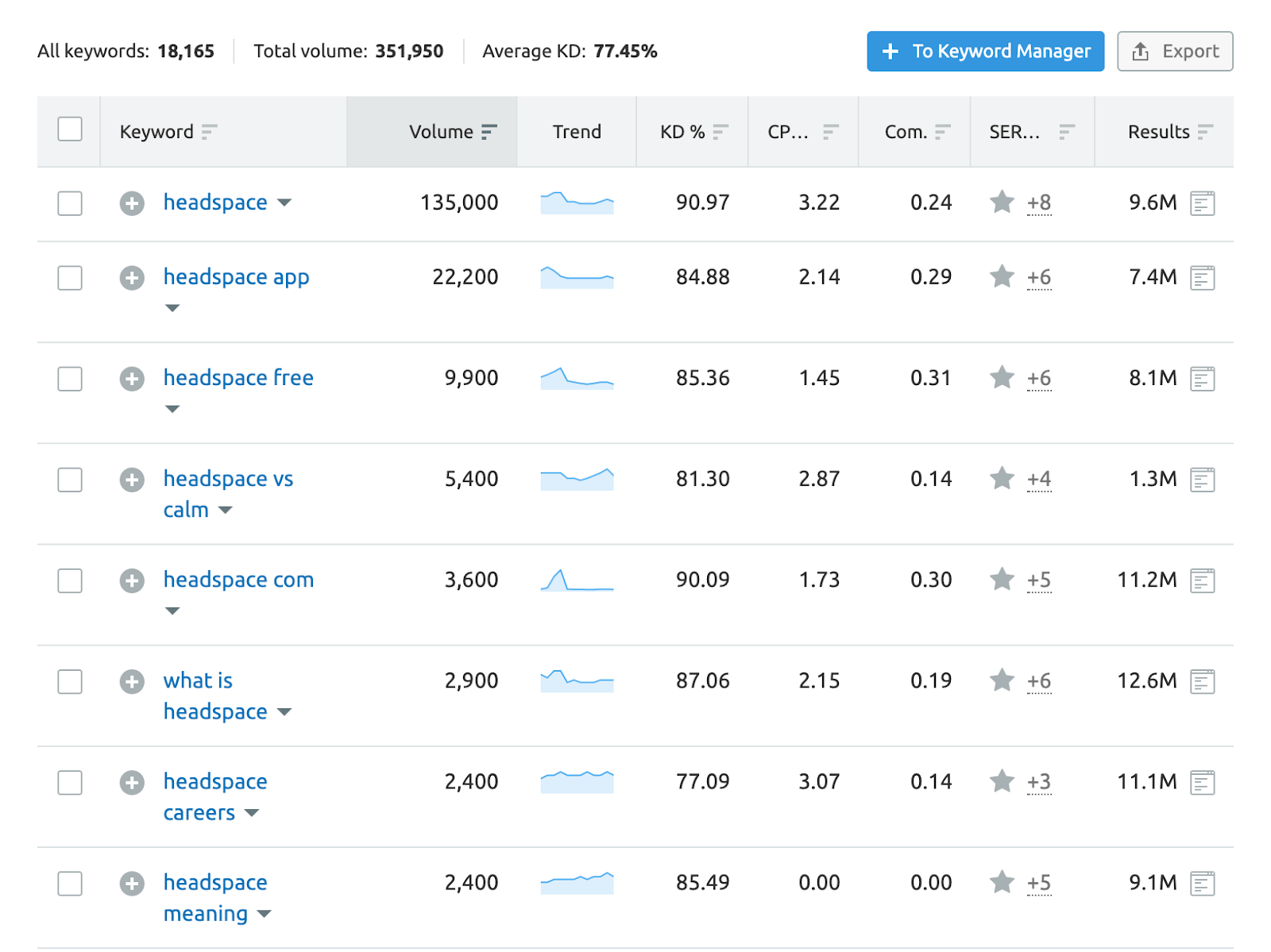
As we can see here, many of the suggested keywords from the keyword magic tool are high volume and related to the app. This means that lots of people are searching for things related to the Headspace app. But what is Headspace itself doing to make sure that it is getting all the potential users possible?
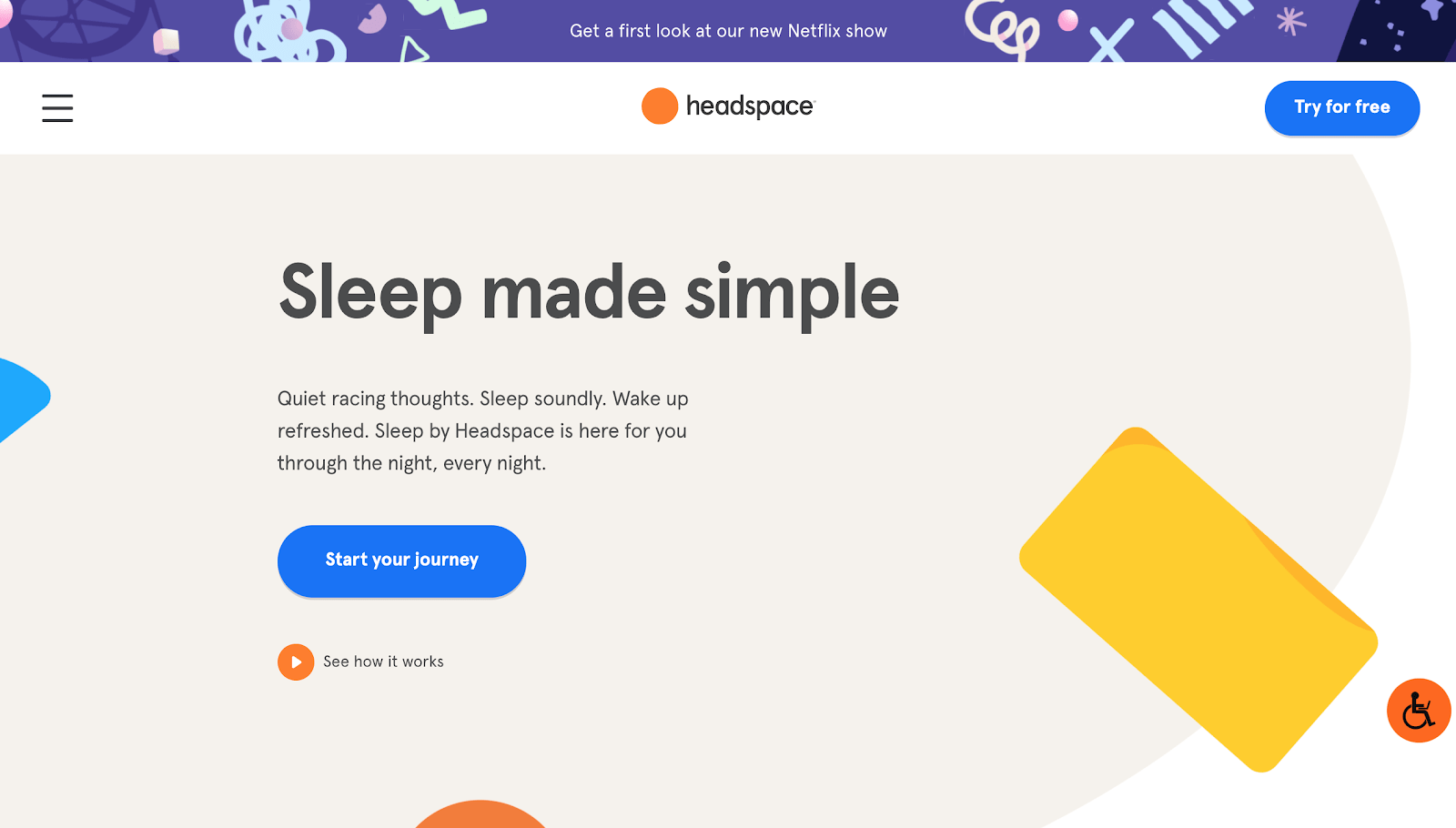
On their home page, we can see a call to action for their Netflix show is at the top of the page.
On the right-hand side, we can see how you can try their service for free, and on the hamburger menu on the right, there is a section with articles. If our assumptions are correct, these articles will contain high-volume search terms and keywords that are likely to be searched by potential users. Let’s try the first one. If our theory is correct, “how to be more empathetic” should be a popular search term.
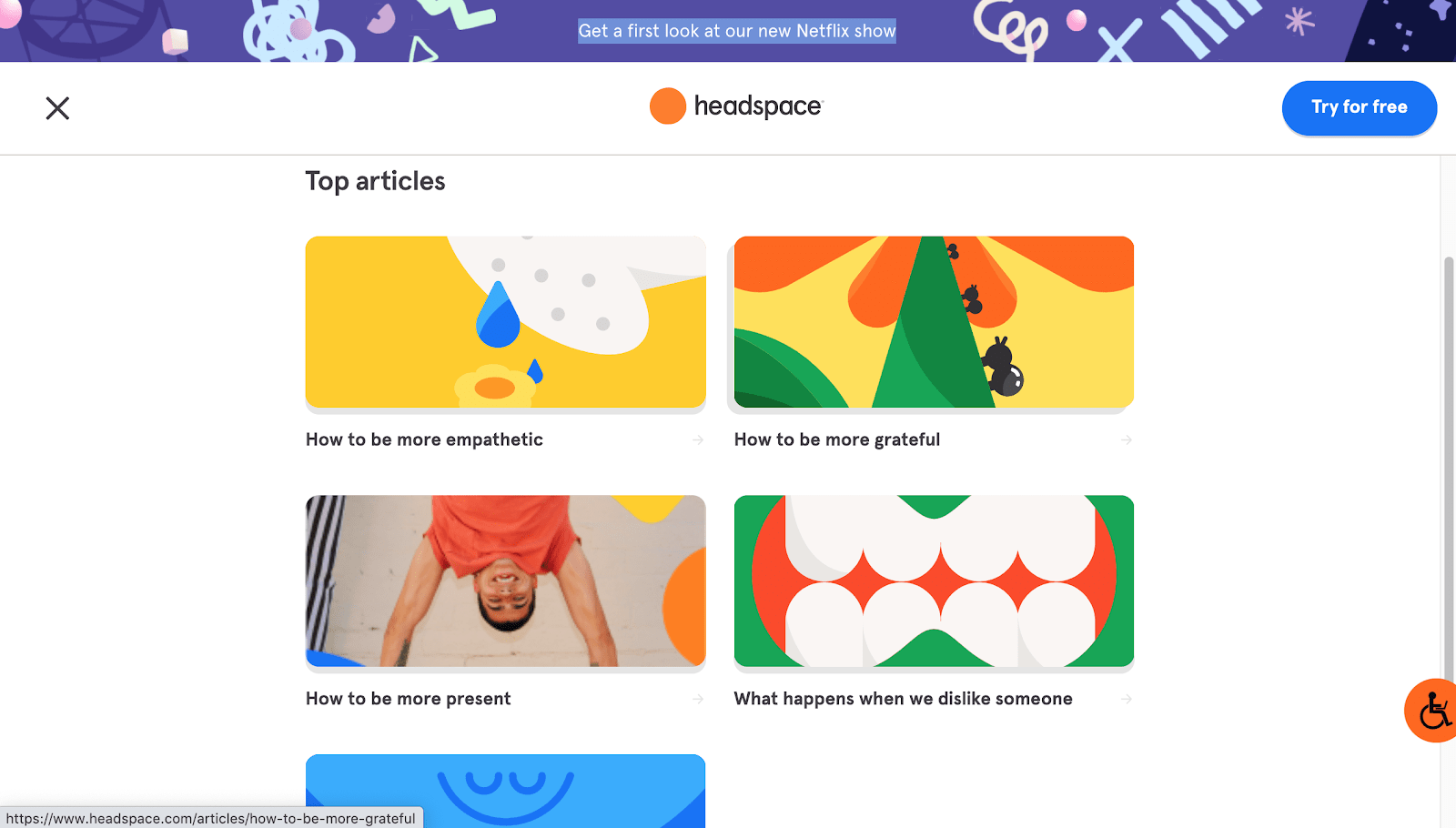
The first sentence also includes phrases such as “empathy”, “ability to understand each other”, “show compassion” and “building blocks of healthy relationships”, a shorter-term within this could be “healthy relationships”.
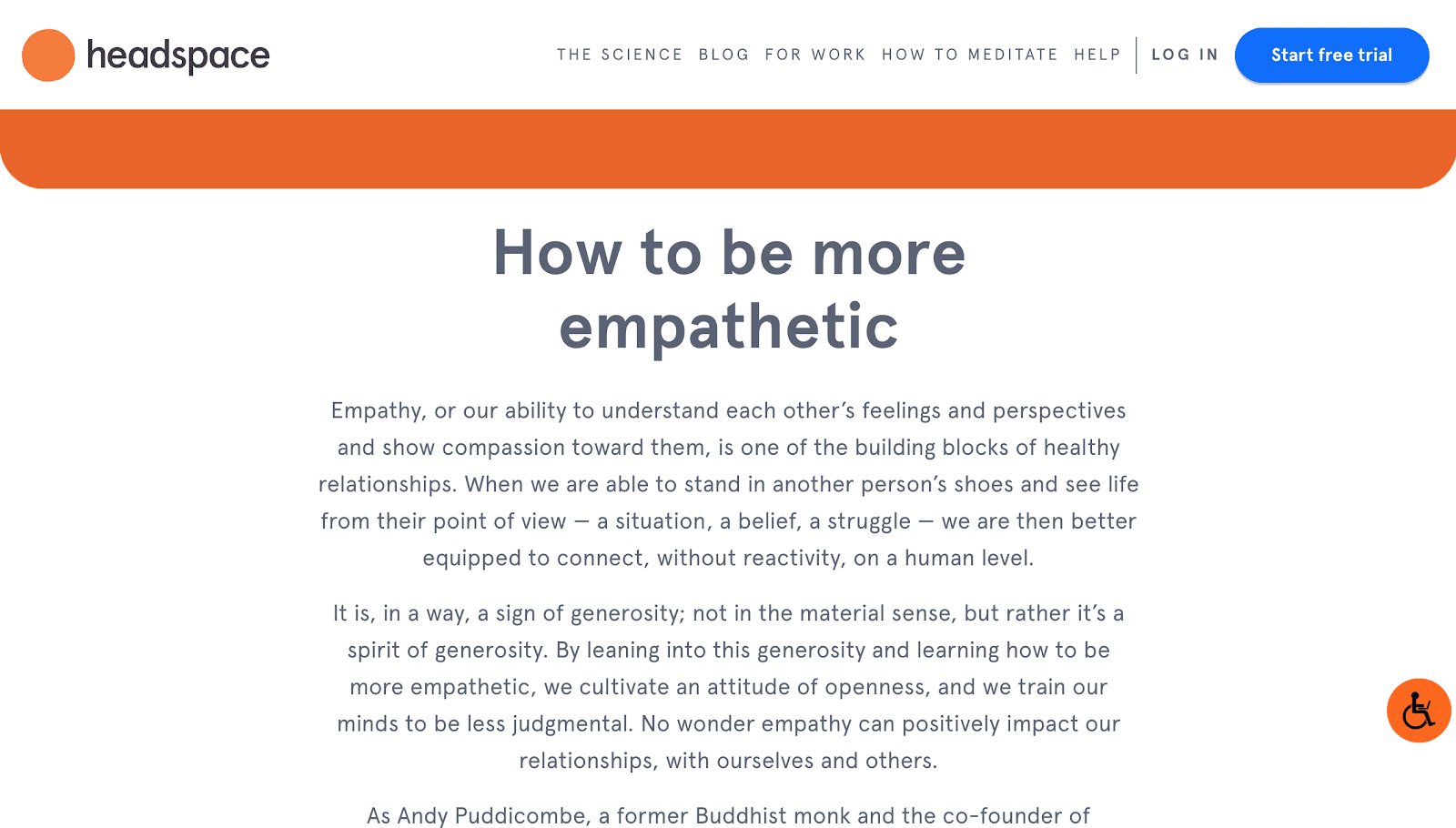
When we look for the title in SEM rush’s keyword magic tool we can see that “how to be more empathetic” is indeed a popular search term.
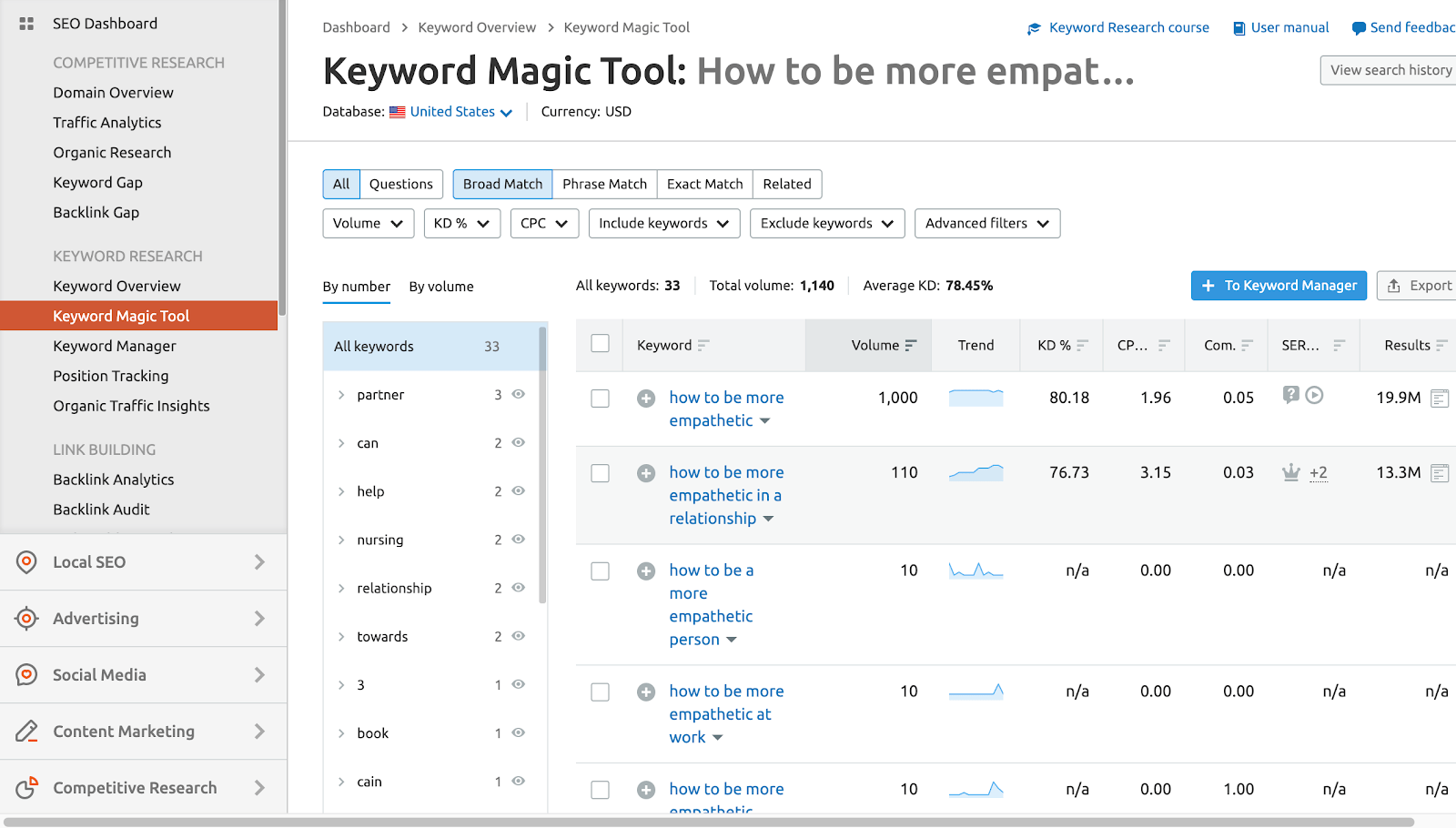
When we check which sites are ranking for this search, Headspace is coming in second.
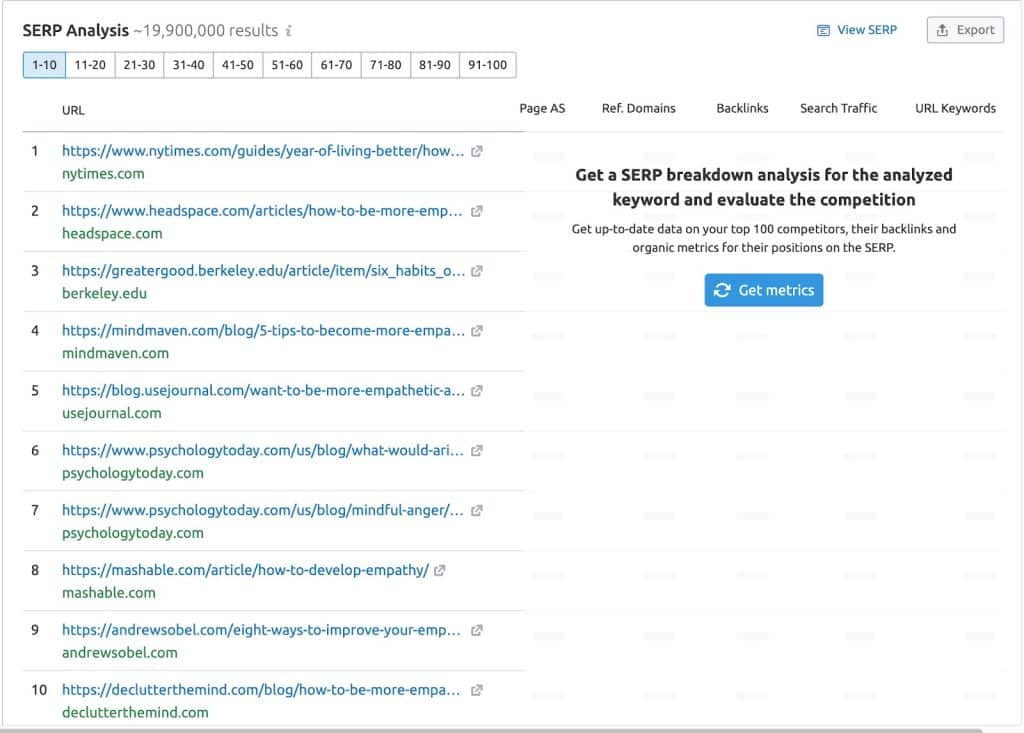
This is great for their blog post but how does it contribute to the app’s growth?
Headspace ASO strategy
Headspace has a great visibility score. It is ranking first for the keyword “meditation” which is a highly sought-after keyword. The app is also very well-liked. We can see an almost totally green daily review breakdown as we see on MobileAction’s App Intelligence tool. This means that Headspace is popular and people are really enjoying it! But what methods are they using to maintain this status? It’s no secret that their biggest competitor Calm is always battling with them for the top spot.
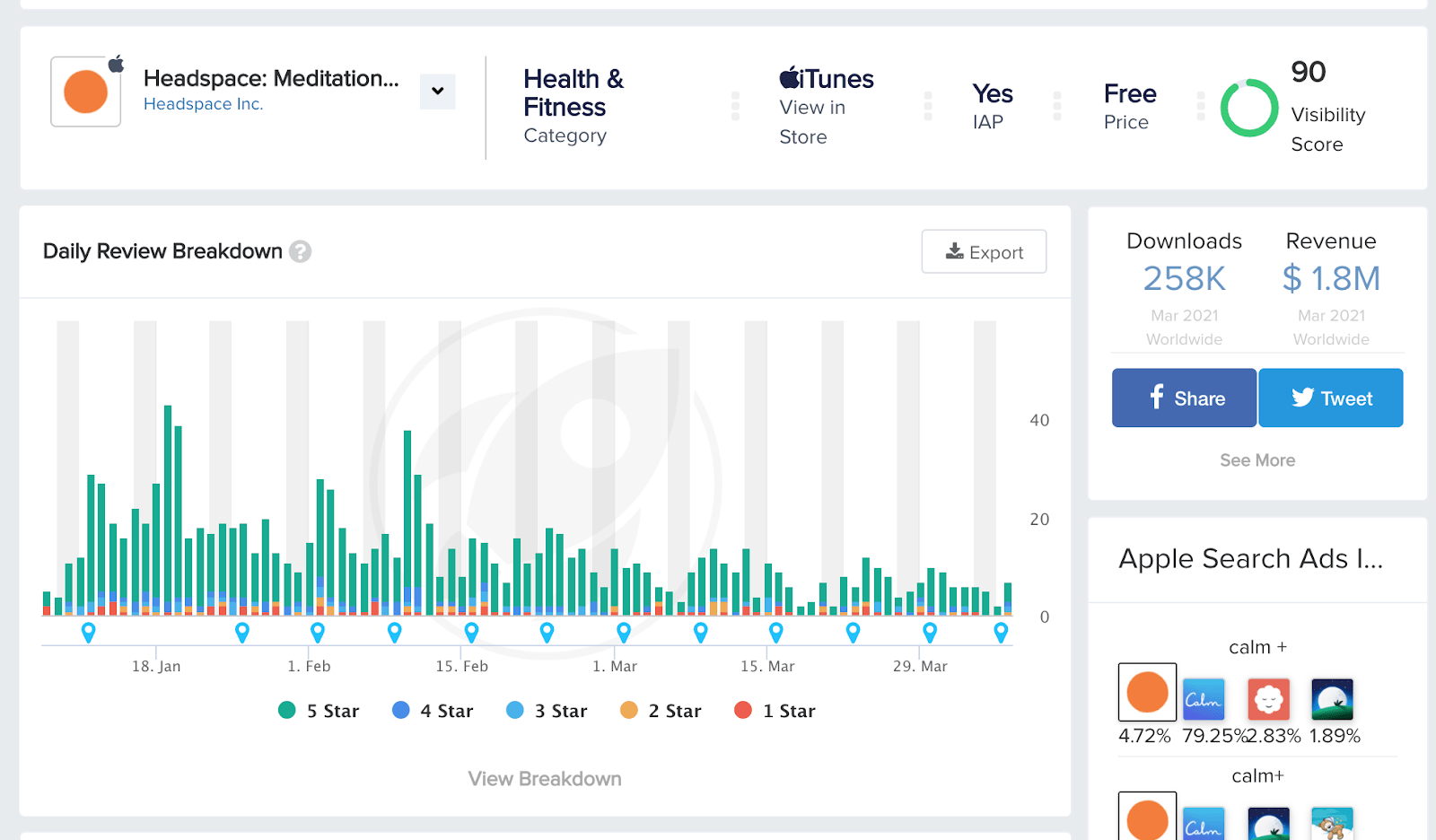
The Netflix show impact
Since posting their Netflix series they have tried to keep everything unified. Down to their screenshots on brand and using the same imagery and color scheme as their show. This unified visual approach allows every aspect of their brand to be recognizable at a glance. Even if people watch the show and just search for the “meditation app”, they will quickly see that this is the same brand as the Netflix series. An easily identifiable brand including logo, creatives, and screenshots is hugely important.
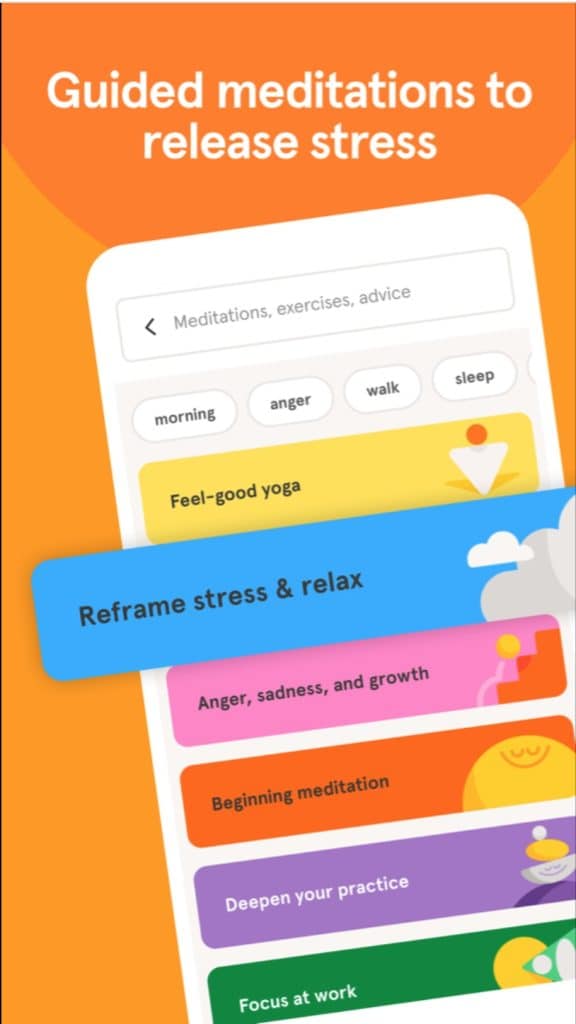
However, Headspace also has all of their bases covered. Though they are extremely recognizable as a brand and definitely set themselves apart from their main competitor (their icon is literally a circle where Calm is a square), they have also made themselves accessible to people who have never heard of their brand before.
What their keywords show us about their ASO and SEO strategy
They offer a friendly and inviting set of screenshots that reassures people that they are for all levels of expertise from beginner to the seasoned meditator.
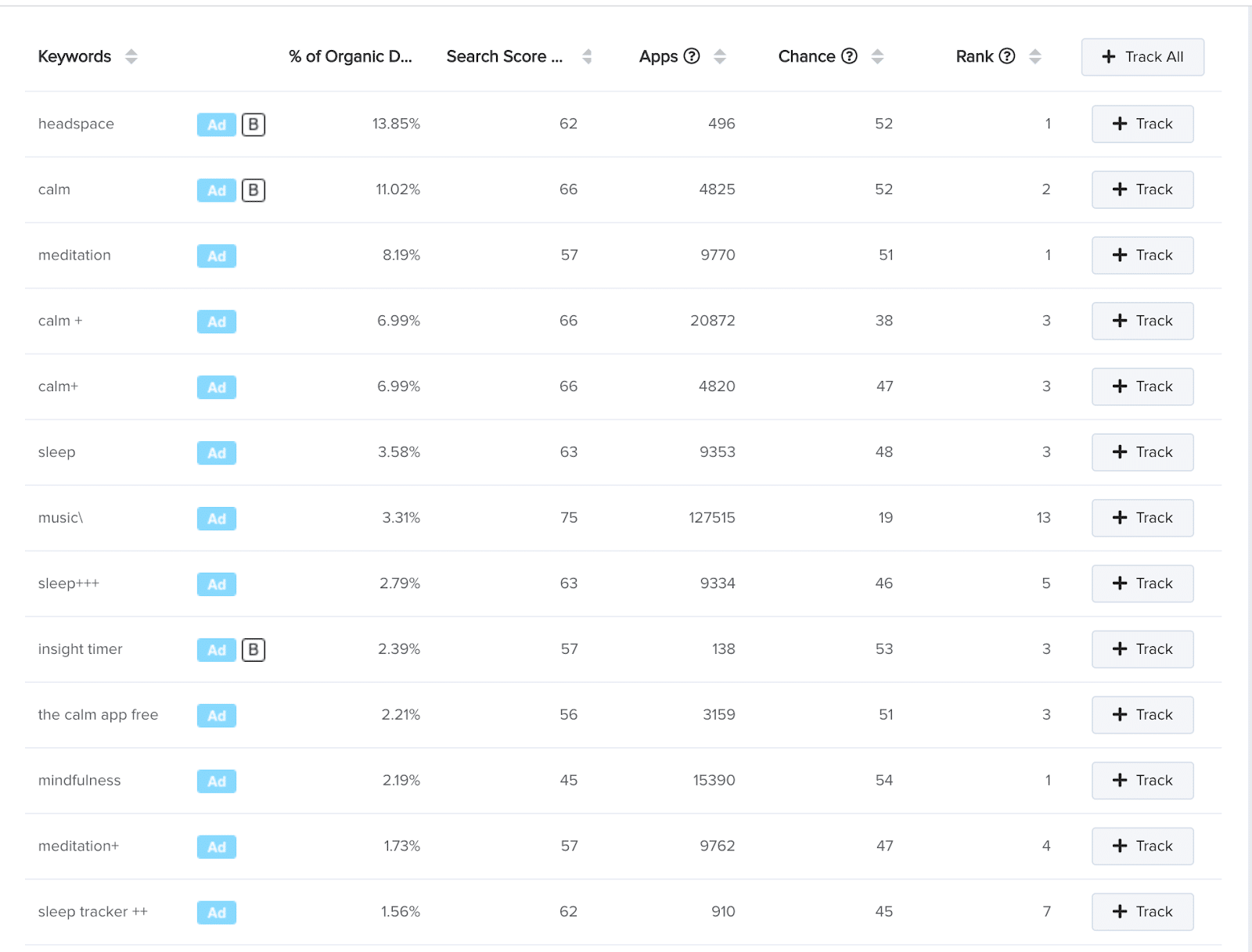
The success of this strategy is apparent in the keywords that they are ranking for. Firstly, we can see that they are getting 13 percent of their organic installs from their brand name. This indicates good branding and that people are searching for the name of their app.
Secondly, we see that 11 percent of their organic downloads are coming from people searching for their competitor Calm’s app. This means that they are doing a good job of offering a competitive service.
Thirdly, they are getting 8 percent of their organic downloads from the word meditation. This is, as mentioned before, a high-volume generic keyword. This indicates that their app is desirable to people who want to meditate, people who want to use headspace, and people who want to use calm. They are also ranking for a lot of sleep and music-related keywords, as well as one more brand.
Search Engine VS App Store
Unlike Google, Apple is not a search engine. It doesn’t rely on web criteria for any ranking algorithm. Rather it relies on keywords and relevancy. The algorithm looks at uninstall/install and Reinstall/Install ratios. They look at download velocity of searched query, App Store Ratings & Reviews, and Developer Account strengths. They also look at metadata to determine the ranking of an app over another one.
Everything included in the iOS Algorithm is also a part of Google Play Store’s Algorithm. However, Android also uses something called a bundle id, a URL structure, and offline signals such as link, social, share for their rankings. This makes them more similar to SEO in structure. It also makes long-tail keywords more important in the play store.
Search results are important for App visibility
People looking for an app, especially one with a paid subscription will also probably take the time to look up what the smartest decision is for a subscription service. This means that you should definitely be ranking for searches such as “why is Brand A better than Brand B?” and so on. These kinds of queries can make or break potential users.
There is also the factor that once someone is paying for one meditation app they are unlikely to start paying for another on top of that. Therefore it is crucial that you sell your strengths as compared to those of your competitors when you are advertising such an app. SEO is a great way to do that.
Keyword stuffing or black-hat link building is of course not recommended. However, related blog content containing keywords and phrases that potential users of your app might search for is an excellent strategy. This can help raise brand recognition at the latest as well as get you some downloads directly.
This can help potential users feel informed as well before they make a decision to subscribe to your app. If people share your posts and you can get some quality backlinks, you can boost the ASO and SEO for that phrase. A well-planned strategy using both channels is a sure winner.
So How is Headspace taking advantage of the ASO and SEO relationship
To sum up, Headspace uses a combination of ASO and SEO in four ways:
- To create more brand awareness. They do this with their Netflix show and blog featuring SEO keywords and phrases.
- To attract users who want to start meditation or need help falling asleep. They do this by including keywords referring to sleep, meditation, mindfulness, and mental well-being in their ASO and their SEO.
- To provide an additional resource for potential users. This includes their Netflix show and blog post. They are including free information on the benefits of meditation and a fuller picture of what their services provide. This way users can confidently subscribe to their app, feeling well-informed.
- To attract their competitors’ potential users. This can be seen in their ASO as well as their SEO. Headspace has done an excellent job at ensuring that if someone searches for calm, they will also at least learn about the existence of Headspace, if not consider downloading Headspace instead.
If you want to know more about ASO and app marketing, or if you are interested in doing your own keyword research, sign up for a demo with MobileAction.

